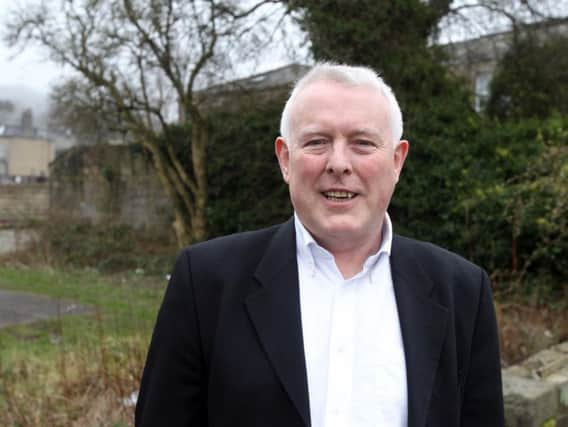Flood clean-up will cost Calderdale £32m


Floods in Calderdale hit the towns of Todmorden and Hebden Bridge, and many other smaller communities, following torrential downpours on Boxing Day.
While recovery costs were estimated to run into tens of millions of pounds, a representative of the Yorkshire Regional Flood Committee has told MPs at a hearing in the House of Commons how they are struggling to cover the bill.
Advertisement
Hide AdAdvertisement
Hide AdCouncillor Steve Sweeney, who also sits on Calderdale Council told the Environmental Audit Committee of MPs, that the local authority faces a £32m bill to fix the valley’s roads.
They are also £15m short on being able to fund vital engineering works to stop the community flooding so severely in the future.
He said the public sector is the only source of funding, so the tax payer will be hit with the cost of trying to improve flood resilience whether it comes from the local council or central government.
He said: “The actual cost we are looking at for our authority is £32m worth of infrastructure damage – that’s just for highways. Our main A-road which is the only low level route from Manchester to Leeds is actually our responsibility, not Highways England, which is a bit of a concern. I always assumed the A-roads were.
Advertisement
Hide AdAdvertisement
Hide Ad“We have a very large bill for infrastructure damage and a very large bill for doing flood defences.”
He said that the council has ‘no capacity’ to fund anymore flood based damage, but is hopeful that they will recover money centrally.
However the split over what should be paid for from national or local funds has become an issue in trying to wade through the complex picture of liability, he said. “What concerns us is where that division is. What assets are liable on a national scale and what assets are liable on a local scale,” he said.
Focusing on the entire ‘watershed’ of Calderdale to avoid such destructive flooding in the future is now his priority, he told the committee’s chair Mary Creagh MP, and he wants a thorough analysis of how the agricultural shelf and valleys are managed.
Advertisement
Hide AdAdvertisement
Hide AdHowever on the same day at the National Farmers’ Union conference in Birmingham, farm leaders have hit back at calls to “re-wild” the UK’s uplands, warning that farming is central to managing some of the country’s best-loved landscapes.
Flooding this winter across Yorkshire prompted calls for hill landscapes to be returned to a more natural state to catch rainfall and prevent flooding, through measures such as planting trees, removing sheep, restoring peat land and reintroducing species including beavers.
But National Farmers’ Union uplands forum chairman Robin Milton said farmers had been shaping the landscapes people loved for centuries, and were best placed to know how they responded to events such as extreme rainfall.
Mr Milton said: “There’s different approaches that can be done on a catchment basis.
Advertisement
Hide AdAdvertisement
Hide Ad“And really the feeling is, ask the farmer, because when it rains a lot, he’s generally the person who knows exactly where the water rises first and where it runs.”
He criticised suggestions that sheep on uplands were responsible for flooding further down the valleys, as sheep numbers had decreased by 20 per cent – 30 per cent in the past 20 years.